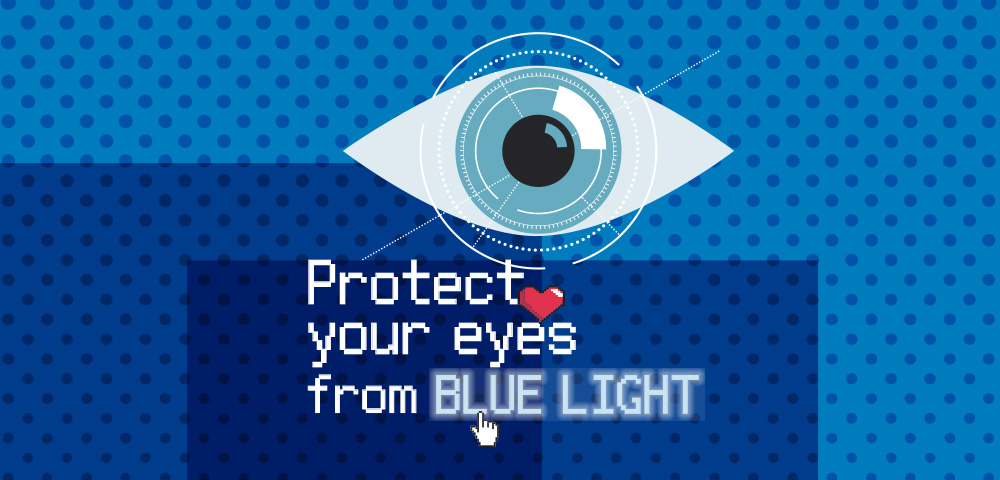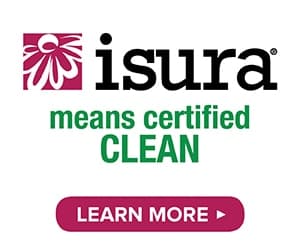
Your eyes are fascinating! As the second-most complex human organ, the eye is composed of more than 2 million working parts. Since 80% of our perceptions come through our eyesight, it is understandable that of all the human senses, vision is most researched.
What is blue light?
Blue light is a natural part of sunlight, along with red, orange, yellow, and green light rays. When it comes to blue light, there is good news and not so good news. First, the good news! Blue light plays a very important role in supporting our circadian rhythm or sleep-wake cycle – its presence signals our bodies to wake up in the morning and its absence signals our bodies to rest at night.
In addition, blue light helps improve mood and alertness, along with memory and cognition. Now, the not so good news. Our modern-day activities have increased day and night exposure to many artificial sources of blue light from LED lighting, computers, smartphones, and other digital devices. In fact, North Americans are self-reporting spending an average of nearly 11 hours per day looking at screens that emit blue light!
When it comes to eye health, blue light with a short wavelength between 415 nm and 455 nm can pass through parts of the eye, specifically the cornea and lens to the retina, leading to eye concerns such as dry eyes, cataracts, and AMD. Eye strain, headaches, and fatigue are other reported concerns. In addition, evening exposure to this high-energy blue light can stimulate brain activity, decrease melatonin secretion, and increase adrenocortical hormone production, leading to hormone imbalance and a disrupted sleep-wake cycle.
Protect your eyes from blue light overexposure by following these 3 easy steps!
Consume the best foods for eye health
Research supports the benefits of specific nutrients for eye health such as omega-3 fatty acids, beta-carotene, zinc, copper, and vitamins C and E. Consuming plenty of colourful fruits and vegetables, legumes and fish, food commonly part of a Mediterranean-type diet, can provide many of these nutrients shown to support eye health, and possibly reduce the risk of AMD.
Research has shown that computer workers who took omega-3 fatty acids EPA (360 mg) and DHA (240 mg) for three months had significant improvement in dry eye symptoms such as decreased rate of tear evaporation and increased tear secretion. Rich sources of EPA and DHA include cold water fish such as salmon, mackerel, sardines, and anchovies, as well as plant-sources such as walnuts, chia, hemp, and pumpkin seeds. High-quality fish oil supplements can also provide beneficial amounts of EPA and DHA to support eye health.
Supplement with lutein, zeaxanthin, and astaxanthin
Lutein, and its stereoisomer, zeaxanthin, are carotenoid pigments found naturally in the eyes, concentrated particularly in the macula and retina. Consumption of these carotenoids has been shown to increase macular pigment optical density, thereby improving protection against harmful blue light. Astaxanthin, another well-known carotenoid, has been shown to support improvement in different eye diseases such as diabetic retinopathy, AMD, glaucoma, and cataracts.
As an added bonus, astaxanthin supports skin health due to its antioxidant and photoprotective effects! While lutein and zeaxanthin are found in foods such as dark leafy greens, carrots, and pumpkin, astaxanthin is found in shrimp, crab, and salmon. Your local health food stores will also offer quality supplements for these nutrients.
Frequent breaks and wear blue light glasses
Taking regular breaks from electronic devices is a must to reduce eyestrain, headaches, and blurry vision. Organizations such as The Canadian Association of Optometrists recommend the 20-20-20 rule – every 20 minutes, take a 20-second break and focus your eyes on something at least 20 ft away. In addition to the advantages of wearing sunglasses to protect the eyes from the sun’s UV rays, wearing blue light filtering glasses may also be beneficial while using electronic devices.
One study found the use of blue light glasses to be an effective intervention to improve sleep, work engagement, and task performance, while reducing counterproductive work behaviour. Other options for reducing blue light exposure from screens include blue light filters on eyeglasses and blue light filter apps on devices.














